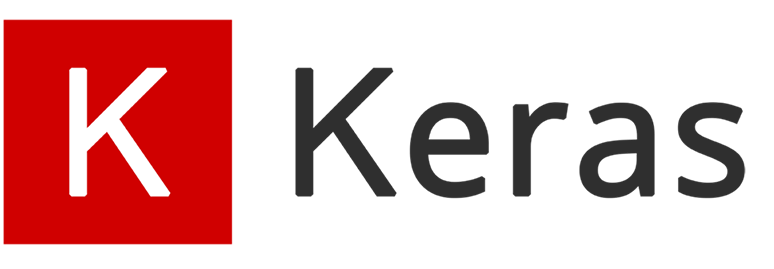TensorFlow Xavier Initialization: A Complete Guide
Learn how to implement Xavier initialization in TensorFlow to improve the training speed and performance of your neural networks.
Learn how to implement Xavier initialization in TensorFlow to improve the training speed and performance of your neural networks.
Deep learning models often suffer from vanishing or exploding gradients, especially when dealing with many layers. This issue can hinder training and prevent the network from converging effectively. Xavier initialization, named after its creator Xavier Glorot, addresses this problem by strategically initializing the weights of neural network layers. This article demonstrates how to implement Xavier initialization in TensorFlow, both in version 2.x and the older 1.x, to improve the training stability of your deep learning models.
Xavier initialization, also known as Glorot initialization, is a weight initialization technique designed to mitigate vanishing and exploding gradients in deep neural networks. Here's how to implement it in TensorFlow:
TensorFlow 2.x
import tensorflow as tf
# For dense layers
initializer = tf.keras.initializers.GlorotUniform()
layer = tf.keras.layers.Dense(units=64, kernel_initializer=initializer)
# For convolutional layers
initializer = tf.keras.initializers.GlorotUniform()
layer = tf.keras.layers.Conv2D(filters=32, kernel_size=3, kernel_initializer=initializer)TensorFlow 1.x
import tensorflow as tf
# For dense layers
initializer = tf.compat.v1.glorot_uniform_initializer()
layer = tf.compat.v1.layers.dense(inputs=..., units=64, kernel_initializer=initializer)
# For convolutional layers
initializer = tf.compat.v1.glorot_uniform_initializer()
layer = tf.compat.v1.layers.conv2d(inputs=..., filters=32, kernel_size=3, kernel_initializer=initializer)In both versions, GlorotUniform initializes weights from a uniform distribution within a calculated range. This range is determined by the number of input and output units in the layer, promoting stable gradient flow during training.
The code demonstrates Xavier initialization in TensorFlow for versions 1.x and 2.x. It shows how to apply GlorotUniform initializer to convolutional and dense layers in a simple model. The examples include model definition, layer creation with specified initializers, and compilation for training. The code is adaptable for different model architectures and datasets.
Here are complete code examples demonstrating Xavier initialization in TensorFlow for both versions 1.x and 2.x:
TensorFlow 2.x:
import tensorflow as tf
# Define input shape
input_shape = (28, 28, 1)
# Create a simple model
model = tf.keras.models.Sequential([
tf.keras.layers.Input(shape=input_shape),
tf.keras.layers.Conv2D(32, kernel_size=(3, 3), activation='relu',
kernel_initializer=tf.keras.initializers.GlorotUniform()),
tf.keras.layers.MaxPooling2D(pool_size=(2, 2)),
tf.keras.layers.Flatten(),
tf.keras.layers.Dense(10, activation='softmax',
kernel_initializer=tf.keras.initializers.GlorotUniform())
])
# Print model summary
model.summary()
# Compile and train the model (example)
model.compile(optimizer='adam',
loss='sparse_categorical_crossentropy',
metrics=['accuracy'])
# Load sample data (e.g., MNIST) and train
# ...TensorFlow 1.x:
import tensorflow as tf
# Define input placeholder
inputs = tf.compat.v1.placeholder(tf.float32, shape=[None, 28, 28, 1])
# Create convolutional layer with Xavier initialization
conv_layer = tf.compat.v1.layers.conv2d(
inputs=inputs,
filters=32,
kernel_size=3,
padding='same',
activation=tf.nn.relu,
kernel_initializer=tf.compat.v1.glorot_uniform_initializer()
)
# Create dense layer with Xavier initialization
flatten_layer = tf.compat.v1.layers.flatten(conv_layer)
dense_layer = tf.compat.v1.layers.dense(
inputs=flatten_layer,
units=10,
activation=tf.nn.softmax,
kernel_initializer=tf.compat.v1.glorot_uniform_initializer()
)
# ... rest of the model definition, loss function, optimizer, etc.
# Initialize variables and run the session
init = tf.compat.v1.global_variables_initializer()
with tf.compat.v1.Session() as sess:
sess.run(init)
# ... training loop and evaluationThese examples demonstrate how to apply Xavier initialization to both convolutional and dense layers in TensorFlow. Remember to adapt the code to your specific model architecture and data.
Understanding Xavier Initialization:
GlorotUniform is calculated as: sqrt(6 / (fan_in + fan_out)), where fan_in is the number of input units to the layer, and fan_out is the number of output units.GlorotUniform (uniform distribution) is commonly used, TensorFlow also provides GlorotNormal which initializes weights from a normal distribution with zero mean and a variance calculated using the same formula.Best Practices:
tanh and sigmoid. For ReLU and its variants, He initialization (using tf.keras.initializers.HeUniform or tf.keras.initializers.HeNormal) is often preferred.Beyond the Basics:
Key Takeaways:
This table summarizes how to implement Xavier (Glorot) initialization in TensorFlow for both version 1.x and 2.x:
| Feature | TensorFlow 2.x | TensorFlow 1.x |
|---|---|---|
| Purpose | Mitigate vanishing/exploding gradients | Mitigate vanishing/exploding gradients |
| Implementation | tf.keras.initializers.GlorotUniform() |
tf.compat.v1.glorot_uniform_initializer() |
| Dense Layer Example | tf.keras.layers.Dense(units=64, kernel_initializer=initializer) |
tf.compat.v1.layers.dense(inputs=..., units=64, kernel_initializer=initializer) |
| Convolutional Layer Example | tf.keras.layers.Conv2D(filters=32, kernel_size=3, kernel_initializer=initializer) |
tf.compat.v1.layers.conv2d(inputs=..., filters=32, kernel_size=3, kernel_initializer=initializer) |
| Key Point | Initializes weights from a uniform distribution within a calculated range based on input/output units. | Initializes weights from a uniform distribution within a calculated range based on input/output units. |
Note: Xavier initialization promotes stable gradient flow during training, leading to more effective deep neural network learning.
By initializing weights strategically, Xavier initialization helps to stabilize the training process and allows deep learning models to learn more effectively. The provided code examples offer a practical guide for implementing this technique in TensorFlow, empowering developers to enhance their neural network models and tackle complex tasks with greater success. Whether you're working with TensorFlow 1.x or 2.x, incorporating Xavier initialization can be a key step towards building more robust and high-performing deep learning applications.
 Module: tf.keras.initializers | TensorFlow v2.16.1 | DO NOT EDIT.
Module: tf.keras.initializers | TensorFlow v2.16.1 | DO NOT EDIT. Module: tf.compat.v1.initializers | TensorFlow v2.16.1 | Public API for tf._api.v2.initializers namespace
Module: tf.compat.v1.initializers | TensorFlow v2.16.1 | Public API for tf._api.v2.initializers namespace tf.keras.initializers.GlorotUniform | TensorFlow v2.16.1 | The Glorot uniform initializer, also called Xavier uniform initializer.
tf.keras.initializers.GlorotUniform | TensorFlow v2.16.1 | The Glorot uniform initializer, also called Xavier uniform initializer. Will PyTorch give different results from Tensorflow? - PyTorch Forums | would like to reimplement a movie recommender system created in tensorflow with Pytorch. My question is that does this modification affects the recommandation results?
Will PyTorch give different results from Tensorflow? - PyTorch Forums | would like to reimplement a movie recommender system created in tensorflow with Pytorch. My question is that does this modification affects the recommandation results? PyTorch Adam performs worse than Tensorflow Adam - PyTorch ... | Hey guys. I have checked similar posts on this matter & tried to dumb it down as much as possible, spent a few days, but still can’t figure this out. So would appreciate your help. I was remaking a simple Sequential neural net from Tensorflow into PyTorch for binary text sentiment classification. I dumbed it down to 5 samples of encoded and padded text. Init variables code for both batch_size = 5 num_epochs = 20 n_embeddings = 3000 embedding_dim = 16 X = [[2, 3, 4, 5, 6, 7, 8, 0, 0, 0, 0, 0...
PyTorch Adam performs worse than Tensorflow Adam - PyTorch ... | Hey guys. I have checked similar posts on this matter & tried to dumb it down as much as possible, spent a few days, but still can’t figure this out. So would appreciate your help. I was remaking a simple Sequential neural net from Tensorflow into PyTorch for binary text sentiment classification. I dumbed it down to 5 samples of encoded and padded text. Init variables code for both batch_size = 5 num_epochs = 20 n_embeddings = 3000 embedding_dim = 16 X = [[2, 3, 4, 5, 6, 7, 8, 0, 0, 0, 0, 0... Layer weight initializers | seed: A Python integer or instance of keras.backend.SeedGenerator . Used to make the behavior of the initializer deterministic. Note that an initializer seeded ...
Layer weight initializers | seed: A Python integer or instance of keras.backend.SeedGenerator . Used to make the behavior of the initializer deterministic. Note that an initializer seeded ...